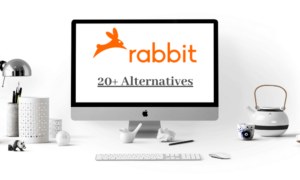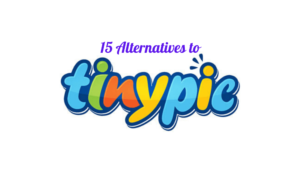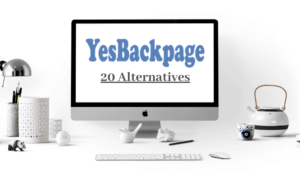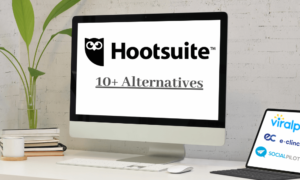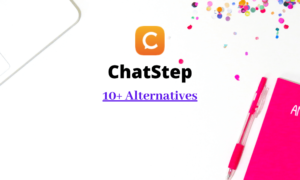In this round-up article, we have listed the 23 must-have SaaS tools that help startups grow in the competitive industry. These tools are tried, tested, and recommended by industry experts. Before checking the list, let’s understand a few essential points about SaaS.
Software as a Service (also known as SaaS) is a software licensing and delivery model that allows users to use cloud-based apps using their internet connection and web browsers anywhere. You don’t need to install them on your PC. Moreover, you don’t have to invest in buying high-configuration PCs for your team.
SaaS tools help you save your time, and they are scalable, of course! Another benefit of SaaS is its ease of integration with millions of apps and APIs. Besides, you can see the SaaS market size research and statistics here.
Best SaaS Tools for Startups and SMBs for 2025:
1. Ahrefs
Ahrefs is our favorite SaaS marketing tool for content marketing. Its subscriptions start at $99 per month, which is reasonable given all of the tools included in the platform. It also offers a 7-day trial for $7. We use Ahrefs to identify interesting content topics, do keyword research, and identify backlink targets.
One of the most effective ways to generate content ideas using Ahrefs is through competitive analysis. You can enter any domain and see their top web pages by traffic and backlink volume. This is a quick way to identify content that similar businesses have proven to work.
Once you pick your content topic, you can use Ahrefs to identify target keywords. Ahrefs’ keyword explorer tool inputs a keyword and returns corresponding information such as search volume, keyword difficulty, and an estimated CPC.
It also returns related keywords. Ahrefs also allows you to do a content gap analysis that identifies numerous keywords that perform well for your competitors but not your website. Finally, you can use the Ahrefs backlink database to identify targets for backlink campaigns. The websites that have already linked to similar content are more likely to link to your new content.
For digital marketers, combining Ahrefs with an Ad Intelligence Tool provides a comprehensive overview of both organic and paid strategies, allowing for more informed decision-making.
Ahrefs most significant shortcoming is that it limits the number of keywords returned in its reports. The $99 monthly subscription only returns the top 10 keywords for any content gap analysis, for example. There’s not much you can do about these limits other than purchasing a more expensive subscription or going with a different tool like SEMrush.
— Bruce Hogan, Co-Founder & CEO of SoftwarePundit
Dale Johnson, Co-founder of Nomad Paradise adds “For any SaaS company looking to create an effective content marketing campaign, I highly recommend adding Ahrefs to your set of tools. Ahrefs excels in its in-depth analysis of your competitor’s website and posts in Google rankings. Ahrefs allows you to identify low-competition keywords that you can write and create content for. While showing the current top-ranking articles and how authoritative the host websites are.”
With Ahrefs, you can make accurate decisions about what you’re going to write about and understand the precise keywords and key phrases needed for Google to rank that content. Plus, it can also uncover keywords/content ideas that may be too competitive, saving you time and resources to explore other focused content to get you consistent traffic.
Ahrefs can also phrase-match, provide you with keyword reports, give you in-depth insight on competitor websites, and many more options. Ahrefs allows you to do content marketing with focus and intent and not just throw a random selection of articles on your blog, hoping rather than knowing, they can potentially rank in the top 1-3.
See Also: What Is a SaaS Marketplace?
2. Canva
Canva is one of the best, most intuitive SaaS-based design tools I have used. You can create professional designs in a matter of minutes as long as you have a vision. Even if you don’t, it offers numerous templates to help you experiment and come up with your ideal product. Canva is also great because it has different design dimensions that customize various social networks much more effortlessly.
As a SaaS expert, I know how much a good design contributes to the overall impression of your product. People often focus on the marketing strategy too much, neglecting the basic package they’re trying to promote.
Pros of Canva:
- highly intuitive
- offers numerous pre-designed templates
- customized designs for a variety of marketing platforms
Cons of Canva:
- certain functions are not available in the free version
- the mobile app does not always function well
- team collaboration within one design is not so easy
Canva Pricing:
A free version of Canva allows you to create all kinds of designs only with few available elements. The Pro version is also quite affordable, with plans starting at 12.95$ per month for individual use and 30$ for an enterprise plan.
— Malte Scholz CEO & CPO at airfocus.com
3. OnCrawl
We see more and more marketers turning to SEO and using SEO tools that allow them to have a clear vision of the strengths and weaknesses of their sites. OnCrawl is one of those tools. This award-winning technical SEO platform helps you make smarter SEO decisions by combining your content, links, log files, and search data at scale so that you can open Google’s black box and build an SEO strategy with confidence.
As an SEO crawler, log files analyer, and third-party integrations platform, OnCrawl generates actionable dashboards to support the entire search engine optimization process and helps improve your rankings, traffic, and online revenues. Another of our core values is customer support.
We have a whole team of SEO experts to assist our customers and help them further their SEO challenges. The pricing starts at $69/month and is based on the number of URLs to crawl. OnCrawl offers a 14-day free trial, so you can crawl your website and analyze the reports for free.
— Laura Bony, Head of Sales North America at OnCrawl
See Also: IaaS vs. PaaS vs. SaaS: Which Cloud Strategy Is Right for Your Organization
4. Grammarly
Being a digital marketer myself, Grammarly is my go-to SaaS digital marketing tool. I don’t use it because I suck at spelling, nor do I have too many typos! I like how it proofreads my work and gives suggestions on how to make my thoughts more cohesive. The thing about Grammarly is that it can proofread virtually almost everything; it does come in handy if you are a blogger, a student, a freelance writer, or even a job seeker.
Generally speaking, this is for anyone who wants to make sure that whatever they write is error-free and to get more confident in their writing abilities. So what do I like about it? It’s convenient to use. First, download the Grammarly extension on chrome. You can then paste your texts on the textbox, and voila, Grammarly will give you suggestions to make the content more substantial and unified.
Another thing I like is its accuracy overall. If you’ve only started writing, this tool might be your pal because it is excellent in pointing out corrections or perhaps things you might have missed.
Lastly, I like that I can build my custom dictionary. As we all know, British, Australian, or American English use some slang that other English speakers might find odd. These are the words that, unfortunately, Grammarly cannot recognize. It’s fantastic that I can add it to my custom dictionary, so I don’t have to dismiss the suggestion every time.
Well, as with any other tool, there is one thing that might still bug you. Even though it is accurate overall, it still has plain wrong suggestions, and they just don’t make sense. The bottom line here is that in the end, after all the work done by Grammarly, you still have to do a final proofread to make sure that everything is on point.
To add, I first had the free version, but it only checks spelling and grammar. I think it’s too limited if you are using it professionally. I then opted for the paid version, which is $59.95 quarterly or $139.95 annually – which gives me additional features like vocabulary suggestions, and most importantly, a plagiarism checker!
It also helps identify more grammar errors. Perhaps it distinguishes more complex grammar mistakes rather than just the easy patterns. In the end, no proofreading tool can magically turn your work into a masterpiece, yes it does help, but in the end, you are the mastermind of your work!”
— Ron Evan from Thrive Agency
5. Moz
We’ve found Moz to be a valuable tool for SEO and optimizing blog posts. Moz offers a browser extension called Mozbar, which is great for prospecting backlinks and getting a quick, high-level view of the authority of other websites. Another key feature is the Moz Link Explorer.
This tool lets you assess the health of your website’s backlink profile by viewing inbound backlinks, DA, etc. For those interested in a more granular analysis of on-page SEO factors, the On-page Grader included with Moz’s Pro (paid) edition has been super helpful for us.
— Sunny Ashley, Founder and CEO of Revy Solutions
6. Mirabel’s Marketing Manager
Harboring in a sweet spot between a robust platform and an affordable marketing automation solution, Mirabel’s Marketing Manager is a must-have SaaS marketing tool in 2021. Our full suite includes the basics redefined, such as workflow automation, website visitor tracking, and thorough analytics and reporting. It’s also home to email marketing unlike any other.
Connect with a segmented target audience using our simple Email Builder, bulk-verify email lists with our brand-new verification tool, and improve your sender reputation with our Reputation Dashboard.
Mirabel’s Marketing Manager also explores competitor analysis to improve keyword ranking, website traffic, and social media marketing strategies. Measure your Moz link authority and view domain links next to the competition.
The huge benefit to Mirabel’s Marketing Manager is its powerful and efficient capabilities are comparable to big names like HubSpot and Salesforce, but its affordability makes it approachable for the everyday company. Five users, one website, and 10,000 contacts will cost you $299 per month. To find out if Mirabel’s Marketing Manager is for you, we offer a free demo.
— Kelly Jacobson, Digital Marketing Strategist at Mirabel Technologies
7. Conversify
Conversify is an excellent SaaS marketing tool for Linkedin. It allows you to list contacts you would like to connect with using Linkedin Sales Navigator. You can then send out automated messages to that list, up to four of them. This means you can reach out to hundreds of people without having to look up contacts individually and add them separately. Some connections will choose not to add you, but many of them will.
This works great for local marketing. You could potentially target every chiropractor in your area or every chiropractor across America, for example, and sell your local marketing services to them. You could do this across thousands of verticals, thousands of individual professionals, or thousands of small businesses in your niche. The possibilities are endless.
However, the real key is to make sure the list you create is targeted, so it does take time to go through advanced search options, but this method works, and this SaaS software helps.
— Jack Choros, Market Research Specialist at IronMonk Solutions
See Also: What Is a Cloud-Based CRM and Its Benefits?
8. Ubersuggest
Ubersuggest is a fantastic, simple keyword research and competitor analysis tool focused on helping you execute a content marketing and SEO strategy for your SaaS website. The main features of Ubersuggest include:
- Type in a competitor URL and see all the pages and keywords that drive the organic traffic
- Get related keywords from a single “seed” keyword
- Get content ideas from top-performing content for a given keyword
- Track your organic search rankings
- Conduct an SEO site audit
- View backlinks for any domain
Pros of Ubersuggest:
- Simple and intuitive
- Affordable compared to other SEO tools
- Does its job effectively
Cons of Ubersuggest:
- No in-app customer service
Ubersuggest Pricing:
Free trial for the free version (limited data), $29/mo for the individual version, $49/mo for the Business version, and $99/mo for Enterprise/Agency version.
— Jayson DeMers, Founder & CEO of EmailAnalytics
9. Timetoreply
Timetoreply is the ultimate email analytics tool that is universally compatible, providing in-depth insights into email volumes, reply times, and activity for individual and shared mailboxes. It supports tracking for G Suite to Outlook and everything in between, making it the most comprehensive and secure solution available.
With real-time reporting, customized scheduled reports, and API integration, along with advanced filters to help you make sense of your most important customer and lead emails, Timetoreply offers the most actionable data and comprehensive metrics in the market.
Unlike CRM tools that only offer analytics on marketing emails such as open rates and click-throughs, Timetoreply focuses on the performance of your sales or service teams in responding to leads and clients, and exactly how that impacts revenue. These are the analytics that every business should be tracking but often overlookStudieses have shown that agents who respond within an hour are 7 times more likely to close a deal than those who take 2 hours to respond.
Timetoreply is the price-performance leader in the email analytics space and comes with free support, a full-feature free trial, and a free demo, without requiring any software installation or credit card. With its unmatched compatibility, security, and comprehensive metrics, Timetoreply is the ultimate solution for businesses looking to streamline their email communication and enhance their revenue growth.
— Tarah Darge, Head of Marketing at Timetoreply
10. PerformLine
PerformLine is the only SaaS platform that provides omnichannel monitoring of your brand across all major marketing channels—the web, calls, emails, messages, and social media from one single platform. When crafting a marketing strategy, compliance is often overlooked, but, complying with regulations is a critical part of any successful campaign, especially for those in highly-regulated industries. Failure to meet regulatory obligations can result in hefty penalties and damaged reputations.
The PerformLine platform automatically monitors for, discovers, and flags content that could pose potential compliance risks across multiple representatives, including sales reps, partners, third parties, influencers, or anybody else posting about your brand. Once the content is flagged, you’ll get an alert so you can review and remediate directly within the PerformLine platform. You then get detailed reporting and insights that can be shared throughout your organization.
Best of all, you don’t have to be a compliance expert to start using PerformLine. The platform comes with ready-to-use rulebooks that cover all major regulations and guidelines for your specific industry. You also receive a thorough onboarding process and have access to a dedicated Client Success team to help you optimize your account and rules. Plus, the rules are 100% customizable to monitor for things like accurate descriptions, correct disclosures, logo usage, brand proximity, and more.
— Ashley Cianci, Director of Demand Generation at PerformLine
Also Read: How to Choose the Best Tutoring Management Software
11. LiveHelpNow
Online customer journeys show companies where website visitors go, what they do on a specific website, and how all that affects conversions. Perhaps LiveHelpNow is not a very convenient tool and not the first thing one thinks about when it comes to marketing tools. But live chat software can assist companies in keeping potential customers on their web pages, assisting them in their journeys, and increasing conversions.
Pros of LiveHelpNow:
LiveHelpNow software serves as a channel of instant communication between the business and the website visitor. It allows a business to greet every visitor to the website in real-time, answer clients’ questions, and guide them through the website, laying the groundwork to convert inquiries into sales.
Additionally, live chat software comes with features such as visitor behavior tracking, a ticket management system, FAQs, and even the ability to communicate with visitors via text or connect with them via phone. All these tools aid the promotion of the business.
Live chat improves customer satisfaction as it provides an opportunity for personalized communications with every visitor. This makes a business stand out from the competition. And there isn’t a better way to market a company than to have more happy customers at the end of the day.
Cons of LiveHelpNow:
The only possible con of this SaaS tool is probably its cost. However, LiveHelpNow live chat software comes with flexible pricing. The cost of the tool ranges between a mere $20-$50 a month, making it affordable to virtually any business.
— Natalya Bucuy, Digital Marketing Manager at LiveHelpNow
12. SurferSEO
SurferSEO is one of my favorite tools for simplifying content marketing. It’s a correlation tool that will let you quickly identify what qualities and keywords help pages rank on specific queries. It’s effortless to set up, allows you to exclude pages that aren’t relevant easily, and integrates with Google Docs. It unifies a lot of tools into a single place. You no longer need to have a tab open for Yoast and Ahrefs for competitor analysis.
Best of all, if you’re running a large operation, its simplicity makes it easy for onboarding. SurferSEO is onbig-timeme saver for producing quality content. Sadly, it isn’t a “buy your way onto the SERP” kind of tool. You’ll still need to make sure that your content answers search queries effectively and that your on-site SEO is flushed out and taken care of.
— Domantas Gudeliauskas, Marketing Manager at Zyro
13. Text Request
Text Request is a business text messaging software that you should use in 2023. Here’s why. Imagine you’re a small business owner and 80% of your opportunities to bring in revenue and create happy customers disappeared.
How would that feel? It’d be terrible! But that’s exactly what most SMBs are experiencing because their customers avoid phone calls and ignore emails. Leads go cold, upsell opportunities disappear, you miss online reviews, and customers forget about you.
Meanwhile, texting is the #1 preferred communication channel, and 9 in 10 want to text with businesses for sales, service, updates, and more. Text Request bridges the gap so you can get that 80% of opportunities back. We give you an online dashboard to manage text messaging professionally as a team, so you can do things like:
Generate more leads from your website (with our SMS Chat)Close more sales (100% average customer increase)Earn more online reviews. Share promotions that drive conversions with 99% open rates and 50% click-through rates. You can schedule and confirm appointments (cut no-show rates in half) and more.
Key features of Text Request include:
- 2-way/conversational messaging
- Mass messaging
- Peer to Peer Texting
- SMS Chat (webchat)
- Picture Messaging
- Team collaboration features like typing notices, signatures, name stamps
- Permanent records of messages for security and compliance
- Keywords
- Autoresponses
- Tagging
- Custom groups (lists and segmenting)
- Chrome extension with click-to-text from all web pages
- API + Integrations
— Kenneth Burke, Director of Marketing at Text Request
See Also: Reasons to Replace Your Current Hotel Management Software
14. Promo Video Maker
Promo Video Maker is a simple cloud-based video creation tool that gives you access to hundreds of video clips and music, you add the te,xt and your video is done and ready to go. In a SaaS business or any business, it is important to work leaner and smarter. We always look for applications that are marketing-effective, easy to use, easy to implement, and cost-effective.
Short videos can be very effective in getting your message across, but they can also be very time-consuming and expensive. We came across Promo Video Maker over two yearago s and find it easy to use and has very affordable pricing packages.
Promo Video Maker Pricing:
They run a lot of very good promotions; you need to check with them before purchasing.
- Annual Basic: $39/month. 36 premium Clips. Unlimited Video Downloads. No Promo Watermark
- Annual Standard: $69/month. Unlimited Premium Clips. Unlimited Video Downloads. Your Watermark. Manage 1 Brand
- Annual Pro: $249/month. Unlimited Premium Clips. Unlimited Video Downloads. White Label Sharing. Manage up to 10 Brands. Reseller Rights.
Features of Promo Video Maker:
- Videos can be used on Websites and Social Media Platforms
- You can add numerous video clips to a video
- Easy to add text
- Hundreds of templates
- Video Library (free or premium)
- Music
- Image Library
- You can upload your images, graphics, and music
- Customer Support is excellent
- You can upload your voiceover video track
- Additional tools
— Jeff Roscher, President at eWorkOrders.
15. Hunter.io
My favorite lead generation tool as a business owner is hunter.io. I use Hunter.io to help me find anyone’s email address in seconds. What I do is put together a list of URLs of my ideal customers and upload them to the hunter.io website.
Then they provide all the email addresses that are associated with each one of those URLs. I use it weekly and have found that it is incredibly quick and helpful and I like how the pricing tiers work. They have everything from a free version to a starter ($49/month) to a growth ($99/month) to an enterprise ($399/month).
— Jason-Davis, CEO at Inspire360
16. Google Analytics
If you run an online business or website, one of the best tools you can get is Google Analytics. Not only is this SaaS tool absolutely free but it is also built by Google and is very simple to integrate into your website.
Google Analytics will really give you deep insights into your web traffic, including where visitors came from, how long they spent on your site, purchases made, and almost anything else you could imagine. With the use of cookies, you can even get a deeper understanding of your traffic by breaking them out by various demographics.
There is no reason not to have Google Analytics connected to your site, even if you aren’t sure what to do with the data right now, Google will store data once you implement it, so you can always go back to learn more from the data later or hire someone to help you.
— Marliis Reinkort, CEO at Code Galaxy
Google Analytics is one of the most important tools that any marketing department should be utilizing frequently. Google Analytics gives us the ability to track various metrics to see how our online marketing and SEO strategies are working. We can also track how successful a campaign was through Google Analytics. With GA, I can see how much organic traffic my site is receiving as well as paid search, backlinks, and how successful my social media strategies currently are.
One of my favorite tools in Google Analytics is the customer engagement tool. This feature lets me see how my site visitors are interacting with the various content I have on my site. I can see the average bounce rate, time on the page, click-through rate, and the average time someone stays on my website before going to search for something else.
This is beneficial when we are creating our dog guides and blog content because we want to know what type of content we have that our customers are loving and what content we have on our site that very few people are engaging in. Understanding these metrics through Google Analytics will result in a more knowledgeable business with a stronger online presence.
— Jenny Massey from Snowy Pines White Labs
Also Read: Best Front-End Web Development Tools
17. Latana
When looking for the best solution to understand better your target audience’s behavior, and customer journey, and how to align your brand voice properly in terms of acquiring the right customers and reshaping your campaign impact, then Latana is the tool that’s definitely a must-have.
This tool brings audience monitoring, tracking, and conversion to a whole new level using its advanced data science by providing an extremely low error margin. Use these insights to better shape how your brand is perceived and what campaigns make the most sense. In addition, it offers in-depth competitor analyses to better understand where and how your brand is placed.
Pros of Latana:
- Highly accurate results, personalized marketing data, audience segmentation, easy-to-use, self-thought, propelled brand awareness insights.
Cons of Latana:
- It might be a little pricier for smaller budgets and doesn’t integrate with many apps
— Joy Corkery, Content Marketing Lead at Latana
18. MessageMedia
We recommend using the SMS solutions of MessageMedia for effective and efficient marketing campaigns. The web portal is easy to use, plus messages can be sent directly from existing CRMs via our integrations. SMS cuts through, too; 90% of texts are read within 90 seconds. There are countless customizable SMS use cases, including competitions, loyalty programs, and promotions.
Marketers can send up to one million messages in a single burst without sacrificing personalization. Customer databases can be segmented, auto-replies can be created using trigger-based rules, and opt-in campaigns can be set up with dedicated numbers. 2-way SMS allows businesses to keep the conversation flowing, so contacts can continue to be nurtured wherever they are on their journey.
Our customer service team is full of knowledge, experience, and patience for those new to SMS marketing. They can guide users as they create mobile landing pages, customize opt-out keywords, and export their post-campaign reports. We currently have more than 50,000 global customers across several industries who are enjoying our SMS solutions.
We offer four pricing options to suit different sending needs, from small businesses to enterprise levels. The Monthly Basics plan starts at $39/month, which features the must-haves without the bells and whistles. We also offer a free trial of our platform, which includes 25 free credits.
— Amanda Ranville, Chief Marketing Officer at MessageMedia
19. ClickFunnels
The go-to marketing software of my choice is definitely ClickFunnels. It has almost everything someone looking to sell a product online needs. First of all, this software has a sales funnel builder tool that helps you create customizable landing pages and sales pages without any coding. It also has a built-in autoresponder that can help you collect leads from your website.
The last tool I’d like to mention is an affiliate management app that you can use to set up an affiliate program for your products and let other people promote them in exchange for a small commission. The reason why I really prefer this software is that you don’t get just the tools, you also get free courses from top marketers like Russell Brunson, Jay Abraham, Tony Robbins, and others.
Pricing goes from $97 for beginners up to $2,497 for advanced, already-established businesses. With their most expensive plan, you get access to their inner circle and 24/7 phone support.
— Bogdan Krstic, Founder of ImGeekz
See Also: Amazon PPC Automation and Management Software
20. SEMrush
I highly recommend SEMrush as an incredibly useful SaaS tool for marketers that are looking to strengthen their brands and websites online. Their toolkit is split up into different useful sections including SEO, social media, competitive research, and content marketing.
I personally like using the SEO and content marketing toolkits as they provide actionable insights into how I can create unique content that will engage my audience. It’s also useful to see what features are included in different plans, and I was able to get a subscription to suit all of my needs.
Before I did this, I activated a free trial option which was very helpful to have an initial look around and get a feel for all of the different features within the tool.
Some of the main pros:
- New features added regularly
- Incredible customer service
- Supports third
- party integrations
- Useful toolkits for marketers
Some of the main cons:
- Vast volume of the tool features can be overwhelming
- Can be considered pricey
— Itamar Blauer, From Itamar Blauer
I recommend SEMrush as my go-to SaaS marketing tool. I’ve been using SEMrush Pro for over a year and I was recently introduced to SEMrush Guru. SEMrush is a content marketing platform that helps you do keyword research, find blog topics, optimize your content, measure the impact of your content, and more.
The features of SEMrush Guru include a content calendar for planning, unlimited topic generation, a content audit tool, and more. As much as I love the great features (like the Keyword Magic Tool), I really love how the company builds community around content and SEO.
The pros for SEMrush are ease of use, good customer service, and the many SEO, content, and marketing features. The cons include the steep jump from the Free plan to the Pro plan ($99.95/month) and the limited features in the Free plan.
The Guru plan is $199.95 per month and the Business plan is $399.95 per month. My company’s and our clients’ content and organic search rankings have steadily improved since we started using SEMrush. It helps give us a roadmap for our content efforts, and it helps us improve our content after it’s written.
— Chris Craft, SaaS Marketer, and Chief Editorhief at InspireFirst
21. Act-On
Act-On is a leading growth marketing automation software that marketers actually love to use. Its drag-and-drop, easy-to-use interface allows professionals of all skill levels to design and execute dynamic campaigns and make smart, data-driven decisions. The suite provides a variety of services like lead segmentation, event-triggered emails, content creation, interactive reporting, and beyond.
Unlike most automation platforms, Act-on offers active contact pricing so marketers spend on what moves the needle, not inactive databases. This solution is perfect for marketers who want to stop shoving leads through the funnel and start growing their business, building customer loyalty, and engaging around their offerings.
— David Greenberg, Senior VP of Marketing at Act-On
22. Webeo
My number one SaaS marketing tool is Webeo. We use it to personalize the content on our website based on their IP address and associated industry.
The business I work for (www.ciphr.com) sells SaaS HR software to SMEs. There are many sectors where we perform particularly strongly, including education, charity, and finance.
For each of these sectors CIPHR has developed specialist functionality that helps HR teams in that niche to solve particularly painful problems eg. safeguarding of children for the education sector, volunteer management for charities, and regulatory compliance for the financial sector
When we’re able to identify a website visitor’s industry (based on their IP address) and can match it to one of these key sectors, we don’t just display the generic HR software messages, we personalize it so it’s relevant to their industry. This includes mentioning the specific features, referring to “schools” rather than “companies” in our copy, changing images, and including customer logos and testimonials from the same sector.
In split tests, our average conversion rate of visitors served the personalized content improved by 90% vs those matched but not personalized.
— David Richter, Director of Marketing at CIPHR
23. PickFu
I have been working with the PickFu team to optimize their website and app for almost a year now and have never seen such a diverse tool. The reason I would recommend this tool is it allows you to gather market research from objective users based on their demographics, and geographic and psychographic information. For brands or start-ups, this information is a critical determinant of success (whether your target audience will resonate with your logo, product, designs, etc.
PickFu doesn’t just help eCommerce companies, it can also be used for authors, designers, brand marketers, and pretty much anything else on the web or mobile. You can even use it as an objective tie-breaker (if you have a disagreement and you want the opinion of 50+ random individuals.
PickFu is an online marketing research tool that helps entrepreneurs poll users based on their geography, demography, and psychology. Rather than buying ads or trusting your gut, you have access to hundreds of individuals who will be honest and use their own biases similar to your user personas.
Main features of PickFu:
- Basic Polls: This is where you ask an open-ended question or two and you need responses quickly. If you need to test one or two things or need a tie-breaker.. this is the pool to use.
- Head-to-Head Polls or Ranked Polls: With a head-to-head poll, you’d have between 2 and 8 concepts, and you want the respondents to help you pick a winner. Alternatively, if you want a ranked poll, you’d have 3 to 8 concepts, and you want the respondents to rank them by preference.
Pros of PickFu:
- Feedback quickly
- Can really narrow down the segmentation targeting
- The quality of feedback is extremely high and detailed.
Cons of PickFu:
- With a lot of questions, it can become quite expensive
- Need to have a formed hypothesis and an actual tiebreaker, if not you’re just wasting your money.
— William Chin, Web Consultant at PickFu
24. Square
Running Scrubs of Evans for 16+ years, I’ve tested dozens of tools. **Square** transformed our entire retail operation when we switched from our clunky legacy POS system three years ago.
Before Square, tracking inventory across our IRG, Maevn, and Healing Hands lines was a nightmare. We’d manually count scrubs, guess reorder quantities, and constantly deal with size shortages during busy periods when local hospitals placed bulk orders. Square’s free inventory management lets me track every single scrub by brand, size, and color in real-time.
The game-changer was their automated low-stock alerts. When our popular Maevn Momentum scrubs (our $28-45 price range bestsellers) hit 5 units, Square automatically emails me. This prevented the disaster we used to face when Augusta University Medical Center would place a 50-piece order and we’d scramble to fulfill it. Our stockouts dropped 70% and customer satisfaction with our “scrubs you love” promise actually became achievable.
**Major limitation**: Their reporting gets messy with seasonal trends. During back-to-school rushes when nursing students flood our Washington Road location, Square’s analytics don’t easily separate student bulk purchases from regular healthcare worker buying patterns. I still use spreadsheets for deeper sales forecasting, but Square handles 90% of our daily operations without costing us a penny for the basics.
—Mark Harrell, Owner, Scrubs of Evans
25. Clio
As someone who scaled a law firm from solo practice to medium-sized operation while launching Paralegal Institute, **Clio** has been absolutely transformative for legal startups. We implemented it in 2019 when managing multiple paralegals became chaotic, and it single-handedly solved our biggest operational nightmare.
The game-changer was automated time tracking integrated with billing. Before Clio, I was losing roughly 15-20% of billable hours because paralegals forgot to log time or couldn’t remember which tasks belonged to which cases. Now everything auto-populates from calendar entries and document work. Our billing accuracy jumped from about 75% to 95%, which translated to an extra $8,000+ monthly in previously lost revenue.
The client portal eliminated constant status update calls that were eating 2-3 hours of staff time daily. Personal injury clients are naturally anxious and call frequently, but now they check case progress themselves. We saw phone interruptions drop by roughly 70%, letting paralegals focus on actual case work instead of hand-holding.
**Major limitation**: The learning curve is steep for non-tech-savvy staff, and we had to budget extra training time. Also, the mobile app crashes occasionally during depositions when you need it most. But for legal startups drowning in administrative chaos, having everything centralized – from intake forms to final billing – is worth the initial setup headaches.
—Matthew Pfau, Curriculum Developer & Educator, Paralegal Institute
26. Salesforce
Having built and scaled Provisio Partners from startup to the largest Salesforce consultancy in human services, I’ve tested dozens of tools. **Salesforce** itself is hands-down the best free SaaS foundation for startups – their nonprofit/startup programs give you enterprise CRM capabilities at zero cost for qualifying organizations.
When we launched Provisio in 2017, Salesforce’s free nonprofit edition became our backbone for everything: client management, project tracking, financial forecasting, and team coordination. Within six months, we could see which service lines were most profitable (workforce development implementations were generating 40% higher margins than housing projects) and identify our best referral sources. This data-driven insight helped us focus resources and grow 300% year-over-year.
The real game-changer was using Salesforce’s automation features to eliminate manual work. We built workflows that automatically assigned new leads to consultants based on expertise and capacity, created project milestone tracking that triggered client check-ins, and generated compliance reports for our government contracts. These automations saved us roughly 15 hours per week that we reinvested into client delivery.
**Major limitation**: The learning curve is brutal without technical background. My Air Force training in complex systems helped, but most startup founders will need 2-3 months to really leverage advanced features. However, even basic CRM usage immediately improved our client relationships and cash flow visibility – critical metrics when you’re bootstrapping growth.
—Travis Bloomfield, Managing Partner & CEO, Provisio Partners
27. Bill.com
The game-changer was automated approval workflows during their Series A fundraising. VCs could see real-time spend patterns and cash burn rates without waiting for monthly reports. This transparency helped close their $2.3M round faster because investors trusted our financial controls. The integration with NetSuite meant our monthly closes went from 12 days to 5 days.
For one mobility startup I worked with, Bill.com’s payment scheduling prevented three potential overdraft situations during tight cash months. We could schedule vendor payments for exact dates when customer payments cleared, maintaining relationships while preserving working capital. The cost savings from avoiding late fees and maintaining early-pay discounts added up to $4,200 annually.
**Limitations**: The mobile app lacks full functionality, and smaller vendors sometimes struggle with their payment portal. Setup requires mapping your entire vendor list and approval hierarchy upfront. But for startups burning through cash quickly, having complete visibility into upcoming payments while automating the process is essential for survival.
After 15+ years managing accounting for startups across tech, AdTech, and mobility companies, **Bill.com** has been absolutely crucial for cash flow management. When I implemented it for a seed-stage AdTech client in 2019, we cut their bill processing time from 8 hours weekly to under 2 hours.
—Michael J. Spitz, Principal, SPITZ CPA
28. Buffer
As someone who’s grown VP Fitness from a single gym to a franchisable business over 13+ years, I’ve relied heavily on **Buffer** for social media management. When we expanded our Providence location and started franchising in 2023, managing multiple social accounts became crucial for brand consistency.
Buffer’s free plan lets you manage 3 social accounts with 10 posts per account – perfect for our Instagram, Facebook, and LinkedIn. The scheduling feature saved me 8+ hours weekly when we launched our spring fitness campaigns across platforms. Their analytics showed our “change Tuesday” posts got 40% more engagement than random workout videos, helping us focus content strategy.
The game-changer was their content calendar view during our franchise launch. I could see our entire month’s posts laid out, ensuring we weren’t oversaturating followers with promotional content versus value-driven fitness tips. This visual planning helped us maintain the community-focused brand voice that’s driven our 98%+ member retention rate.
Main limitation: free version doesn’t include team collaboration features, so when we brought on marketing help, we had to upgrade. Also, no Instagram Stories scheduling on free tier, which hurt our daily engagement strategy. But for fitness startups building brand awareness on limited budgets, it beats posting randomly or paying $50+ monthly for enterprise tools you don’t need yet.
—Joseph Depena, Owner, VP Fitness
29. Elation Health’s EHR
As a physician who founded Wellness OBGYN in 2022, I’ve steerd the startup tech stack challenge firsthand. **Elation Health’s EHR** became our backbone – not just for patient records, but for business operations that traditional startups overlook.
When we launched, I needed HIPAA-compliant patient communication that wouldn’t break our budget. Elation’s free tier handled our first 200 patients while automatically generating insurance billing codes from clinical notes. Their patient portal reduced our front desk calls by 60% since patients could directly schedule follow-ups and access test results. Last month alone, this saved us 12 staff hours that we redirected to patient care.
The real game-changer was their integrated telehealth feature during our Botox consultations. We could review before/after photos securely and discuss treatment plans remotely, which increased our consultation-to-booking rate from 40% to 75%. Many patients appreciated not driving to Honolulu just for a 15-minute discussion.
**Major limitation**: The free version restricts custom forms, so we couldn’t build specialized intake forms for our laser treatments initially. But for healthcare startups proving their model, it handles compliance headaches while you focus on patient outcomes rather than tech infrastructure.
—Dr. Cheryl Twu, OBGYN, Wellness OBGYN
30. SimplePractice
Running CMH-RI taught me that **SimplePractice** is absolutely essential for healthcare startups. We switched after launching in 2021 when juggling patient scheduling, HIPAA compliance, and payment processing became impossible with separate systems.
The game-changer was their integrated approach – patients book testosterone consultations online, we document everything securely, and insurance claims submit automatically. Our no-show rate dropped 40% because patients get automated reminders with rescheduling options. When someone books ED treatment, they complete intake forms beforehand, making appointments 15 minutes shorter.
The telehealth feature saved us during staff shortages. Jose could consult fertility patients from home while I handled in-person sonic wave therapy. We processed $180K in revenue through their payment system last year without touching paper forms.
**Limitations** hit hard though – their reporting lacks depth for clinical research we publish, and custom forms require workarounds for specialized men’s health assessments. The monthly cost jumps significantly once you exceed 100 active patients, but the time savings on administrative work let us see 30% more patients weekly.
—Len Berkowitz, Co-Founder, Center For Men’s Health of Rhode Island
31. DeepL’s
For language education projects, I’ve relied heavily on DeepL’s free edition, and it’s one of the best free SaaS tools I recommend for edtech startups. We used it when drafting Spanish-to-English course content, and it cut translation time by 40% without compromising too much on accuracy. The usability is straightforwardcopy, paste, and instantly editwhich makes it accessible for non-technical educators. Where it struggles is with colloquial expressions and academic terminology, which meant I always had to fine-tune for cultural nuance. Eventually, we did upgrade for glossary consistency, but as a starting point, the free tier was a productivity booster.
—Carmen Jordan Fernandez, Academic Director, The Spanish Council of Singapore
32. ClickUp
As someone who’s been evaluating business tools since founding Titan Technologies in 2008, **ClickUp** stands out as the game-changer for startups. I’ve tested dozens of project management platforms while consulting for everything from Fortune 500s to two-person teams.
We implemented ClickUp for a Central New Jersey manufacturing client who was drowning in spreadsheets and sticky notes. Within 30 days, their project completion rate jumped from 67% to 91% because everything lived in one place – tasks, time tracking, client communications, and file storage. The automation features eliminated their weekly status meetings entirely since progress updated automatically.
The real magic happened when they started using ClickUp’s custom fields to track regulatory compliance deadlines. Previously, they’d missed three critical certifications costing $15K in penalties. Now automated reminders keep them ahead of every deadline. Their team went from 12-hour days to consistent 8-hour schedules.
The biggest limitation is the learning curve – it’s powerful but overwhelming initially. Their free tier caps at 100MB storage which fills up fast with client files. However, for startups needing to prove operational efficiency to investors, ClickUp’s detailed reporting dashboards show exactly where time and resources go, making funding conversations much easier.
—Paul Nebb, CEO, Titan Technologies
33. Livly
As Marketing Manager for FLATS with a $2.9M annual budget across 3,500+ units, I’ve tested dozens of tools. **Livly** stands out as the most underrated free SaaS for property management startups, but it applies to any customer feedback-driven business.
We used Livly’s feedback analysis to identify patterns in resident complaints – finded recurring issues with oven operation after move-ins. This insight led us to create maintenance FAQ videos for our onsite teams. Result: 30% reduction in move-in dissatisfaction and measurable improvement in positive reviews within three months.
The real power is Livly’s automated categorization of feedback themes. Instead of manually reading hundreds of resident comments, it surfaces actionable patterns immediately. For multifamily startups, this means faster problem resolution and higher retention rates. We saw direct correlation between addressing Livly-identified issues and improved occupancy rates.
Main limitation: the free tier caps advanced analytics features, so you’ll eventually need to upgrade. But for startups validating product-market fit through customer feedback, it’s invaluable for turning complaints into systematic improvements rather than one-off fixes.
—Gunnar Blakeway-Walen TWA, Marketing Manager, The Winnie Apartments by Flats
34. Slack’s
The success of recovery work depends entirely on clear communication between team members. Slack’s free SaaS tool delivered unexpected benefits to my organization through its free plan. I hesitated to install another communication platform because my email inbox already felt too full. The fast-paced collaboration between my staff members through Slack convinced me to adopt the platform.
Our team established separate communication channels for clinical updates and operational matters and brief wellness check-ins. The nurse posted lab results in the clinical channel while the case manager shared housing options in another channel which resulted in a complete plan development within 15 minutes without any need for email communication. Slack enabled our team to achieve coordination that previously required multiple hours of work and resulted in delayed responses.
The platform operates with text messaging functionality but includes threaded conversations and file sharing capabilities and integration features. All team members who lacked technical expertise learned to use the system during their first week of use. The search function in Slack proved essential for our team because it allowed us to retrieve past conversations which helped us recall treatment plans from previous weeks.
The free plan of Slack has a major restriction because it only keeps messages for ninety days before they become inaccessible. The system removes all messages older than ninety days from its database. The long-term context requirements of our environment make this limitation very disappointing. Slack provided exceptional benefits to our organization by reducing misunderstandings and enhancing departmental transparency despite its message history restrictions.
The system brought an unanticipated positive change to our organization. The platform provided a fast way to share appreciation and celebrate minor achievements which strengthened team unity. The platform provided both operational benefits and emotional support to team members because it established a feeling of connection which remains vital for a compassionate field.
—Tzvi Heber, CEO & Counselor, Ascendant New York
35. QuickBooks
After 19 years running my accounting firm and serving clients in every state, I’ve seen too many startups blow money on expensive bookkeeping software when **QuickBooks Simple Start’s free trial + their free Self-Employed version** handles 90% of what micro-businesses actually need.
I had a network marketing client who was paying $89/month for fancy accounting software but only using basic expense tracking. We moved her to QuickBooks Self-Employed (free for simple businesses) and set up proper business expense categorization. She immediately started capturing $200+ monthly in missed deductions – mileage, home office, business meals – that her previous system wasn’t prompting her to track.
The mobile receipt capture feature alone saved her 3 hours weekly of manual entry, and the automatic mileage tracking caught business trips she’d completely forgotten about. During tax season, we pulled her Schedule C together in 20 minutes instead of the usual 3-hour nightmare. She went from owing $3,400 in taxes to getting a $1,800 refund just by properly categorizing expenses the software helped her identify.
The limitation hits when you need true double-entry bookkeeping or multiple user access – then you’re looking at $30+ monthly. But most startups aren’t there yet and waste money on features they won’t use for years.
—Courtney Epps, Owner, OTB Tax
36. SketchUp
After running Keiser Design Group for nearly 30 years, **SketchUp Free** became our secret weapon for client presentations and early design concepts. Most architects stick to AutoCAD, but SketchUp’s intuitive 3D modeling lets us create visual concepts that clients actually understand during initial meetings.
We use it for rapid prototyping before moving to our professional software. Last month, a commercial client in Columbus was struggling to visualize how flexible workspaces would function in their existing building. I created a basic SketchUp model during our meeting, showing movable walls and modular furniture arrangements. They signed the contract that day instead of “thinking about it” for weeks like usual.
The real value is client communication. When we designed a church expansion, I built quick 3D walkthroughs showing how the sanctuary would flow into fellowship areas. The building committee made decisions 40% faster because everyone could see exactly what we meant instead of trying to interpret 2D drawings.
**Limitations**: The free web version lacks advanced rendering and has limited cloud storage. Complex architectural details require our paid software eventually. But for initial concepts and client buy-in, it’s eliminated countless revision cycles. We’ve shortened our design approval phase from 3-4 meetings to typically just one.
—Dan Keiser, Principal Architect, Keiser Design Group
37. Follow Up Boss
As Community Manager at ViewPointe Executive Suites in Las Vegas for 5+ years, I’ve watched hundreds of startups cycle through tools before finding what works. **Follow Up Boss** transformed how we convert virtual office leads – and it’s completely free for the first 30 days with robust features that most startups never outgrow.
When we implemented Follow Up Boss in 2019, our lead conversion rate jumped from 23% to 41% within six months. The automated follow-up sequences were crucial since many startup founders inquiring about virtual offices are juggling a million things and forget to respond. I set up 7-touch email sequences that nurture leads over 30 days, sharing relevant content about Las Vegas business licensing and virtual office benefits based on their industry.
The game-changer was the lead scoring system integrated with our website forms. When attorneys (our biggest client segment) submit inquiries, they automatically get tagged and receive compliance-focused content about Nevada business advantages. This targeted approach helped us sign three major law firms this year that generate $180K+ annually in virtual office revenue.
**Major limitation**: The reporting dashboard becomes sluggish with 10,000+ contacts, and the mobile app crashes frequently when managing complex follow-up sequences. But for startups under 5,000 contacts, it’s handled everything from our mail forwarding client onboarding to meeting room booking confirmations without requiring expensive CRM alternatives.
—Nancy Avila, Office Administrative Assistant, ViewPointe Executive Suites
38. Xero
Running EveryBody eBikes for years, I’ve found **Xero** accounting software absolutely critical for small retailers like us. When we started, I was drowning in spreadsheets trying to track inventory costs, warranty claims, and custom bike builds across multiple suppliers.
Xero’s bank reconciliation feature saves me 6+ hours weekly. Our bike shop processes dozens of transactions daily – parts orders from overseas suppliers, local delivery fees, interstate shipping for our Lightning eBikes going to the US and Canada. Before Xero, I’d spend entire weekends matching bank statements. Now it auto-matches 90% of transactions, leaving me time to actually help customers instead of buried in paperwork.
The inventory tracking became essential when we survived the 2022 Brisbane floods. Insurance required detailed records of every damaged trike and eBike component. Xero’s purchase order system had tracked every Samsung battery cell and Tektro brake system we’d ordered. We recovered $180k in inventory claims because everything was automatically documented with supplier invoices linked.
**Major limitation**: Xero doesn’t handle complex manufacturing costs well. When we design custom bikes like our Trident trike, calculating true production costs requires external spreadsheets. The reporting also struggles with our unique business model where we customize every single unit – their standard retail reports don’t capture our labor-intensive assembly process.
—Andrea Herklots, Co-Owner, EveryBody eBikes
39. Medallia
After 40 years running fitness businesses, I’ve tested dozens of tools. **Medallia** has been game-changing for member feedback – we saw 31% improvement in retention after implementing their real-time survey system. Members can instantly rate classes and equipment, letting us fix issues before they become cancellations.
The platform automatically triggers follow-ups when someone gives low scores. Last month, we caught three members frustrated with equipment downtime and personally called them within 24 hours. Two renewed their memberships specifically because of that response speed.
**Google Workspace** handles our multi-location operations seamlessly. We manage staff schedules across Fitness CF locations, share training materials, and coordinate between Satellite Beach and other sites. The collaborative docs feature lets trainers update class notes in real-time, so coverage staff know exactly what members worked on.
**Limitations**: Medallia’s advanced features require paid tiers after basic usage. Google Workspace can get clunky with large video files for workout demos. But both pay for themselves – Medallia through retention improvements, Google Workspace by eliminating communication gaps that used to cost us members when staff weren’t aligned on member preferences.
The key is picking tools that directly impact your customer experience, not just internal efficiency.
—Pleasant Lewis, Owner, Fitness CF
40. Mailchimp’s
I used Mailchimp’s free plan during my early days of managing a recovery program and maintaining alumni connections. The platform evolved into a vital tool which helped participants stay accountable and receive encouragement after completing our program.
The initial campaign I created lacked refinement because I struggled with template design which resulted in an unappealing layout. The essential part of the message included weekly meeting reminders and brief motivational content along with resource links. A former resident contacted me to express that my weekly emails provided him with the motivation to continue attending support group meetings. The tool proved its worth to me through this experience.
The free version of Mailchimp provides users with fundamental email templates and allows them to manage a reasonable number of subscribers while offering basic performance tracking features. The analytics provided me with valuable insights about which subject lines generated the most interest from my subscribers and which ones they completely ignored. The feedback I received through analytics helped me create more effective messages throughout time.
The free plan included Mailchimp branding at the bottom of every email which presented a professional drawback. The unprofessional branding did not outweigh the benefits of using the service. The system required me to send messages manually because it restricted automation capabilities.
The free version enabled me to maintain contact with people who otherwise would have disappeared from our network. A startup or program with restricted resources will find greater value in direct communication than in advanced features.
—Timothy Brooks, CEO & Co-Founder, Synergy Houses
41. Figma’s
The discovery of Figma’s free plan brought unexpected changes to our work processes which exceeded my initial expectations. Our team experienced difficulties with design file exchanges through email because team members constantly asked which version represented the final version. The solution to this problem emerged immediately through Figma’s implementation.
The design team and developers experienced continuous misalignment while working on a client MVP project. The client requested a new onboarding flow during the project development stage. The standard process required seven days of continuous revisions and multiple back-and-forth exchanges. I spent one evening redesigning the entire flow structure in Figma before sharing the link through Slack which allowed developers to start building their work during the next morning. The project launch became possible because we maintained our momentum which proved essential for startup success.
The free version of Figma provides users with real-time collaboration and commenting features and prototyping tools that have an easy learning curve. The team members without design experience learned to add comments and modify text content within the platform. The main limitation of the free plan is its restricted version history but early-stage teams usually do not find this limitation problematic.
The platform enabled all team members to participate actively in the creative development process which became the most appealing feature to me. The workspace eliminated all barriers between designers and developers who worked together as one unified team. The virtual workspace provided equal participation opportunities to all team members which resulted in faster progress and higher team spirit.
—Darryl Stevens, CEO & Founder, Digitech Web Design
42. Airtable’s
I use Airtable’s free version because it connects spreadsheet functionality to database capabilities while remaining accessible to users who lack technical expertise. During my first property evaluation I established a base which tracked information about thirty potential development sites. I transformed the overwhelming spreadsheet chaos into a system of linked tables which organized zoning information and projected financial returns and construction permit schedules.
The system reached its peak when a field-based contractor used mobile forms to submit data directly from his location. The system processed the data entry into my pipeline through automated filters which I had previously established for ROI analysis. The process of receiving reports through email took multiple days before I could manually update my spreadsheet. The implementation of this change reduced the overall process duration by several hours while enabling faster decision-making.
The system provides simple steps for new user integration. The drag-and-drop interface together with multiple view options (grid, kanban, gallery) enabled my team to understand database functionality despite their lack of database experience. The free plan restricts record and automation capabilities which become problematic when you expand your operations. The file size restrictions of the free plan became a problem when I attempted to upload multiple property images.
The tool provided me with enhanced pipeline visibility which enabled me to take immediate action when I identified a promising deal. The tool restored my valuable time in real estate while remaining completely free of charge.
—Brian Chasin, CFO & co-founder at SOBA New Jersey, SOBA New Jersey
43. Asana
The recovery process benefits significantly from tools which maintain team accountability. The free version of Asana became my essential organizational tool. The team members handled outreach duties and client intakes and follow-up responsibilities when our organization began its operations. Tasks slipped through the cracks. I adopted Asana with hesitation but it demonstrated its value right away.
I established my first Asana project to monitor new intake procedures by assigning follow-up calls and assessment scheduling and documentation verification. The team members failed to remember their assignments because I used to give them verbal instructions. The free version of Asana allowed me to establish tasks with deadlines which automatically sent notifications to team members. The assessment deadline for a client became visible in Asana which allowed me to prevent their scheduled appointment from being missed.
The system features boards and lists which provide simple navigation that users can learn within a short period of time. The mobile application enabled me to monitor progress between scheduled meetings. The fundamental features of the free version were sufficient for our initial period because it restricted advanced reporting and integration capabilities.
The system established a system of accountability which became my most valued feature. All team members understood their specific duties without needing to ask for clarification. The clear assignment of responsibilities proved more important than sophisticated features because it directly impacted the lives of people who needed timely assistance.
—Ryan Hetrick, Co-founder of Epiphany Wellness, Epiphany Wellness
44. Notion
I struggled to understand Notion when I first started using it because it presented itself as a tool that could perform any task yet this feature made it difficult to begin. The application presented itself as a blank space which seemed to offer unlimited capabilities yet this made it challenging for me to start using it. I started using Notion as a notebook to write down my thoughts and save articles before I transformed it into a functional tool.
A group of students lost their application deadlines multiple times which led me to create a simple database system. I created a basic database structure which included fields for names and essays and recommendations and dates. Nothing fancy. The first week of using the system proved successful when a student marked a deadline as finished before I had a chance to verify it. The students demonstrated actual responsibility by taking charge of their work which rarely occurs when people receive only email reminders.
The free version of Notion provides sufficient capabilities to create tables and calendars and connect different notes together. The students found it convenient to access shared pages through the platform while they appreciated the direct commenting feature. The system becomes difficult to navigate when numerous users start adding content to the platform. I spent an endless amount of time searching for an uploaded draft essay because the system lacked proper organization. The tool’s ability to become disorganized depends on how well you establish organizational rules during the initial setup process.
The tool eliminated numerous email exchanges while creating a clearer understanding of what needed to be done. The students accessed their progress information from one central location while I dedicated my time to delivering meaningful feedback instead of monitoring their forgotten tasks. The free version of this tool provided us with organization while avoiding additional expenses and complicated systems.
—Joel Butterly, CEO & Founder, InGenius Prep
45. Trello’s
Project management software does not come naturally to me because I lack interest in using it. I used to be a person who relied on sticky notes spread across my workspace for note-taking. The number of clients with concurrent requirements exceeded what sticky notes could handle. I decided to test Trello’s free version because I needed a solution.
I created my first Trello board with three basic columns which I named “To Do” and “Doing” and “Done.” The act of moving the “Meal prep ideas for a client” card from “Doing” to “Done” brought me a sense of accomplishment. The visual feedback system provided visual confirmation which prevented our team from losing track of important tasks.
The moment when I realized Trello worked effectively occurred during a family gathering. The parent expressed concern about whether the therapy homework received proper follow-up from the therapists. I displayed the “Completed” card on my phone Trello board to show the parent. Their body relaxed completely when they saw the visual evidence. The visual display showed them that actual progress existed beyond our empty promises.
The system provides an easy-to-use interface. The entire team learned Trello through practical experience because they did not require any training sessions. The mobile application proved useful because I could access the board to make updates while walking between therapy sessions. The free version restricts dependency linking so I had to write “Do this AFTER X” inside the description field. The system operated effectively despite its lack of sophistication.
The tool established a common platform which helped our team maintain organization while avoiding complicated systems. The system provided us with the exact solution we required at that specific time.
—Maddy Nahigyan, Chief Operating Officer, Ocean Recovery
46. HubSpot CRM
The tools I choose always direct attention toward people instead of paperwork. The free version of HubSpot CRM provided me with a solution to handle outreach and community relationship management without requiring financial investment.
I began using the platform to monitor my interactions with local organizations and referral partners. I previously stored names and notes in multiple spreadsheets and email threads throughout different platforms. The platform consolidated all my information into a single platform. I recorded the community leader meeting about establishing a referral pipeline through HubSpot. The system provided me with all necessary notes when we met again after a month. The system’s ability to maintain continuity between our interactions helped establish trust which strengthened our partnership.
The free version of the platform enables users to manage contacts and track deals and access basic email template functionality. The system features an easy-to-use interface with a straightforward dashboard and simple menu structure which our team members mastered without difficulty. The system requires paid subscription for users to access advanced automation features and reporting capabilities. A dependable system for tracking interactions between people proved essential for our startup operations.
The most important aspect for me was maintaining a consistent approach. The success of recovery work depends on maintaining relationships because forgetting important conversations leads to lost partnership opportunities. The free CRM from HubSpot enabled our organization to maintain professional organization which resulted in improved service opportunities for our clients.
—Garrett Diamantides, Partner – Southeast Detox, Southeast Addiction Center & Southeast Addiction Center Nashville Director of Medical Billing at Remedial Pro, Southeast Detox Georgia
47. Wave Accounting
My experience with audits and investor calls makes me seek tools which minimize confusion in my work. Wave Accounting offered its free plan as one of the standout features that caught my attention. The free version of Wave Accounting proved to be effective for handling basic accounting tasks beyond my initial expectations.
I used Wave to create basic financial projections and handle simple billing operations. A payment from one client almost went unnoticed because we failed to match it with our records although they had already sent the funds. The system detected an unprocessed invoice through its dashboard which allowed me to verify the payment transfer had successfully reached our account. The system alert prevented the error from continuing into our monthly financial reports.
The system operates through three main functions which include bank account linking and invoice sending and expense and income tracking. The system lacks the sophisticated features of enterprise solutions but it successfully fulfills its basic functions. The system reaches its limits when users need to handle multiple business entities or generate complex financial reports. The system reached its maximum capacity when I attempted to create reports that combined data from different business divisions.
The system delivered precise financial data visibility without any financial expense which made it suitable for our early-stage business operations. The software provided me with both accuracy and visibility at no cost which proved to be an uncommon combination that brought me much-needed peace of mind during that critical financial period.
—Peter Lai, CFO, Engage Wellness
48. Zoom
Orthodontic practice success depends heavily on effective communication between dental professionals and their patients. The free version of Zoom became my go-to tool for virtual consultations because it provided me with the ability to connect with patients and staff members. The initial doubt about using Zoom for clinical discussions disappeared when I observed how it simplified operations for both patients and staff members.
A teenage patient and his family members needed to avoid traveling across the entire city so they scheduled a video consultation with me. The free Zoom call enabled us to present treatment alternatives while directly answering all their questions through video communication. The family booked their appointment immediately following the video conference. The meeting would have needed multiple weeks to schedule through traditional in-person meetings.
The free version of Zoom enables users to conduct unlimited one-on-one meetings and group conversations that last up to 40 minutes. The system operated with simplicity because most family members required no guidance to use it. The digital scan and diagram sharing feature on the platform enabled me to present information to patients easily. The system has two main drawbacks which include its time restrictions for group meetings and occasional network problems. The audio connection failed during a call so I needed to restart the session which created an unfavorable experience.
The fast connection feature enabled patients to save time while creating available slots for dental chair procedures at the office. The free version of Zoom provides small practices and startups with easy access to expert advice which benefits all parties involved.
—Randy Kunik, CEO & Founder, Kunik Orthodontics
49. Loom
In the thick of scaling Bright Home Offer with a remote team and a shoestring budget, the one free SaaS tool that truly changed the game for me was Loom. In real estate wholesaling, you’re dealing with VAs in different time zones, onboarding new hires, and clarifying processes constantly–all of which is hard to do well by email or chat. I started recording quick screen-share walkthroughs of our deal analysis, contract steps, and even “how-to” videos for pulling comps–then shared the links so the whole team (from my closers to my new VA in the Philippines) was always on the same page. Loom made it painless for everyone to refer back to processes when stuck, which saved me hours each week answering the same questions, and made team training almost hands-off. The interface is dead simple: you hit ‘record’ and drop the link, and the free plan was more than enough for our small-but-growing operation. The only limitation is it caps your video length and cloud storage, so after a while I started archiving videos in Google Drive. For any startup founder, especially running things virtually, Loom can multiply your time and help you build systems that scale.
—Jasper Cool, Founder, Bright Home Offer
Hope you liked the list of must-have SaaS tools recommended by the industry experts. If you have any questions or suggestions, please use the comment box below.
Hi there! I’m Nick Cullen. As the Senior Content Editor with Solution Suggest, my responsibility is to scrutinize and refine our articles and reviews, focusing on software solutions, games, apps, and websites. I’m dedicated to delivering reliable and enlightening content that offers viable alternatives to your current digital tools. If you have any suggestions or inquiries, you can reach me at editor@solutionsuggest.com. Also, I invite you to connect with me on LinkedIn!












